RITUALS - INTRODUCING TEA (MATCHA) WITH MIZUBA MATCHA
In our own quest for incorporating healthy habits into our daily rituals, we have fallen in love with the practice of making and consuming matcha. We particularly love the Portland-based company Mizuba, for their beautiful packaging, authentic product, and straight forward approach to enjoying this colorful and healthful beverage.

A little bit about the company and the history behind the practice of Matcha...
"A passionate student of all tea for the past 16 years, a trip to Japan in 2013 opened Lauren Danson’s eyes to how quality teas can be made accessible and enjoyed by all. A frothy cup of matcha in the town of Uji revealed to her the depth of Japanese tea's complex flavor profiles. What's more, the friendships she made over those cups of tea were just as wonderful as the quality of the tea itself. The experience spurred Lauren toward a dedication to study Japanese tea cultivation, production, and culture. A connection with a traditional Uji matcha producer solidified her commitment to traditional shade-grown and stone-ground matcha with her company, Mizuba Tea Co.® Lauren has been recognized by the farmers she works with via the Kyoto Chamber of Commerce as an “official Uji-cha Tea Dealer,” and works with award-winning matcha producers. Lauren would love to take a #matchamoment with you! Join us at www.mizubatea.com."

However, it wasn’t until the later Kamukura period (1191 AD) that the famed Rinzai Zen priest Eisai encouraged the growth and production of tea. Legend has it that Eisai gave seeds to another Zen priest, Myoe Shonin. Shonin originally began cultivating tea in Toganoo, but searched for better growing environs and found Uji. News of Uji’s legendary tea spread across Japan, and Uji’s fame as the best tea-growing region was set in history. Uji Matcha, in particular, became known as the pearl of Japanese green tea."

"Before I knew how famous the region was for its quality, and before the idea of Mizuba Tea Co. even came to be, I was so inspired by the small, close-knit community where I tasted Matcha for the first time when I was just traveling in the country. I was incredibly blessed to connect with an enthusiastic Matcha producer, in charge of his family’s 100-year-old farm (“very young,” he says). It wasn’t long after that I felt called to build a company grounded in the traditions and spirited relationships I encountered over cups of tea.

I am indebted to our tea producers in Japan. I continue to learn from them and am thankful for the opportunity they give me to share their work. Mizuba Tea is built on relationships and I’m incredibly grateful to be able to partner with people that are working to preserve high-quality tea culture and heritage. We directly support, know, and trust our producers as our friends. The tea in itself is magic — but sharing a cup of tea with people you meet in life is the real magic!

 Lauren’s perfect cup of matcha in a step-by-step guide:
Lauren’s perfect cup of matcha in a step-by-step guide:
- A traditional preparation of matcha will involve two steps: koicha + usucha (thick tea, thin tea). Warm your Notary chawan (tea bowl) with hot water. Discard water.
- Place 2.5 grams of Mizuba Matcha in your chawan (tea bowl) using your chashaku (tea scoop)
- Pour 1 ounce of 160 degrees Fahrenheit – 175 degrees F fresh water over your matcha tea. Using too-hot water will make your tea bitter. Do not use boiling water. You may let your kettle boil, but then add cold water to the kettle to bring down the temperature prior to adding it to your tea.
- Using your chasen (tea whisk) gently “knead” the tea in a circular motion so no clumps remain and a nice even paste forms. There should be a beautiful aroma. This is your koicha! In a traditional tea ceremony, you would sip this concentrated, intense tea followed by enjoying a wagashi (sweet treat).
- To enjoy the rest of your tea, make usucha. Pour 3-4 more ounces of warm water over your koicha tea. Use your chasen, make the characteristic “m” or zig-zag motion with the whisk by rapidly & lightly moving back and forth across the entire bowl until an even, creamy froth forms. Enjoy!



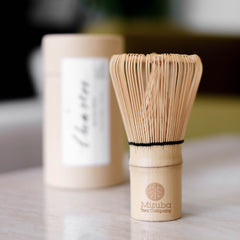
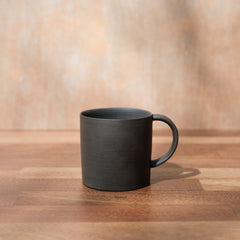
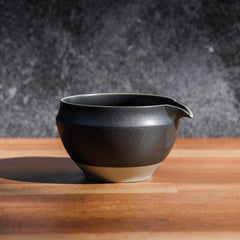
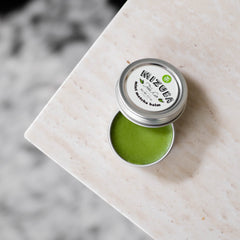
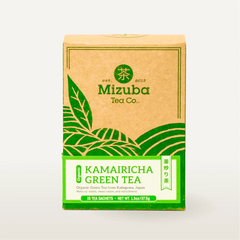


Leave a comment